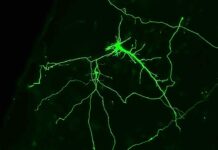The Breakthrough Study on Histones
Gene regulation, genome replication, and cell division in eukaryotes have been attributed to histones, which are the spools formed by proteins, enabling DNA to wrap around them. For many years, it has been believed that bacteria lack histones, although they have their own set of DNA-folding histonelike proteins. In a recent discovery, researchers from the LMS London Institute of Medical Sciences have detected several potential histone proteins in bacteria, including one that displays an unusual interaction with DNA.
The researchers delved into the histone of a species named Bdellovirbio bacteriovorus, which consumes other bacteria. They believed it to be an ideal candidate for finding histones since the bacterium varies in size throughout its lifecycle and needs to compress and unwind DNA carefully. The researchers recognized a histone fold in an uncharacterized B. bacteriovorus protein called Bd0055 and established that it binds DNA by observing that, in the protein’s presence, DNA moved much slower through pores in a gel.
The Fascinating Findings

The researchers found that the protein might bind to the outer edges of DNA strands, an unprecedented behavior observed in histones. Instead of packaging DNA to occupy less space, the authors suggest that the edge-on binding might straighten the strands and protect the DNA from over-compression during division into smaller cells.
Although the discoveries are fascinating, the protein’s function still needs to be validated inside cells. Advanced genetic variants are required to build on these findings.
The Verdict
This study’s findings imply that histones might be present in a wide array of bacterial species. B. bacteriovorus is known to have exchanged genes with a distant relative, Leptospira interrogans, in the past, and the researchers identified a similar histone protein in this species. The team plans to investigate this histone in their future research.
Google News | Telegram
















